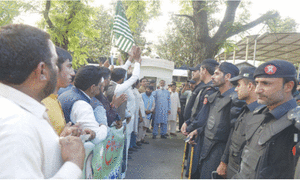The huge Rannikot Fort, built with stones and limestone, is a talismanic wonder of the world. Spread over a huge area, on zigzag black and brown hillocks, it has four gates: Sann Gate, Amri Gate, Shah-Pere Gate and Mohan Gate. Defensive entrenchments are built at little distances and are connected with fortified walls and footpaths.
In the surrounding area, there are three other fortresses — Miri Fortress, Sher-Garh Fortress and Mohan Fortress. The cause of constructing the fort here seems to be an abundance of water in this mountainous region. However, it is more plausible that the fort was built for defence and residential purposes.
Historical research indicates that rulers of different times have lived here and repaired it from time to time. Very old coins, terracotta of the Indus civilisation and engraved symbols such as the swastika, the peepal tree leaf, peacock, sunflower, lotus flower, remains of Zoroastrians and Buddhists and arrows from different times have been found here.
But who built it and when, is still a mystery. In the view of some scholars, it was constructed by the Talpur Amirs. However, this account is in dispute — many historians believe that the fort was built before the Kalhora and Talpur rulers.
The key to solving this mystery may be carbon dating. While archaeologist Italian Paolo Biagi and Renato Nisbet, an archaeo-botanical researcher, did collect samples for radiocarbon dating in 2009, their choice of sample has been controversial. Nisbet and Biagi took the sample from the Sann Gate which was not a part of the original construction of the Rannikot Fort.
Historians argue that a more accurate date could be determined if material from the Shah-Pere Gate — where the outer repaired wall has crumbled exposing the actual or ancient inner wall — was radiocarbon dated instead. Till this happens, the debate amongst historians about how old Rannikot really is shall continue.
Published in Dawn, Sunday Magazine, February 5th, 2017















































